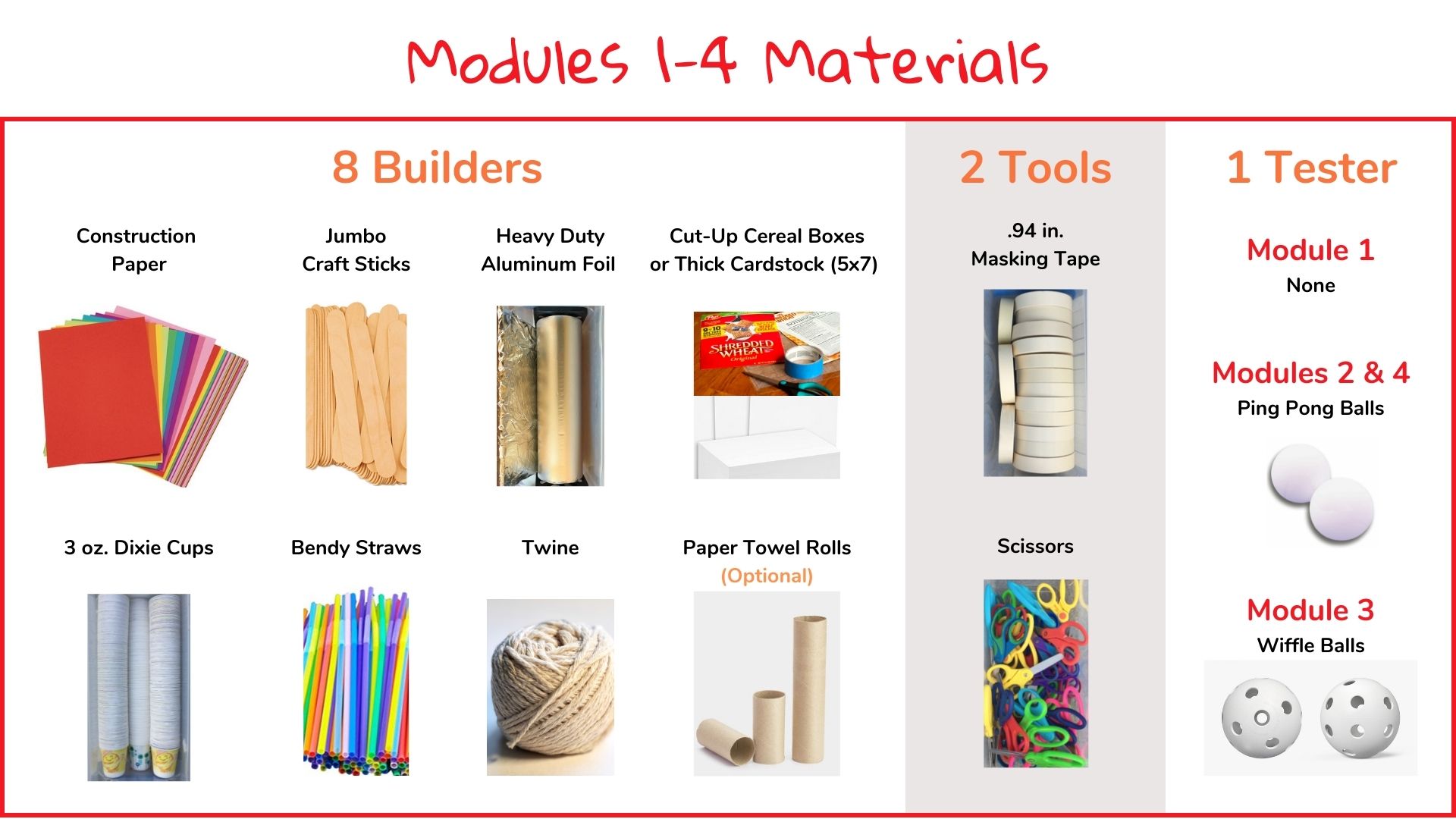STEM Challenge: Double Bubble

Challenge
Create connected bio bubbles linked by airtight pathways. The design must allow an astronaut, represented by a Wiffle ball, to traverse between bubbles without external exposure, simulating a safeguard against the inhospitable Martian air.
Constraints and Success Criteria
- The bio bubbles and connecting pathways must be completely sealed, preventing any air or gases from entering or escaping.
- The design must accommodate the movement of a Wiffle ball, serving as the astronaut, through the pathway from one bio bubble to another.
Materials

You need a Wiffle balls as testers for this challenge.
Logistics
- Prepare Materials: Ensure you have all the necessary materials ready beforehand and organize them so that they are easily accessible to students. Students should use no more than five of any one material per creation! For example, a student can use five straws and five pieces of paper, but not ten straws. If you provide aluminum foil, no more than one arm’s length piece for each student!
- Set Up Testing Area: Create a designated area where students can test their bio bubbles.
- Provide Guidelines and Constraints: Reiterate the challenge and the constraints to students as needed. Emphasize the importance of following safety guidelines and considering the constraints, while designing their bio bubbles. Building time is 45 minutes!
- Model the Design Process: Before students begin, demonstrate the design process by going through the steps yourself. Discuss how to brainstorm ideas, create prototypes, test them, and make iterations based on the results, as needed.
- Encourage Collaboration: Foster a collaborative environment where students can work together in pairs. Encourage them to share ideas, help each other troubleshoot challenges, and provide constructive feedback throughout the process. But no groups of three!
- Support Adaptation: Encourage students to embrace the mindset of adaptation and problem-solving. Help them see that setbacks and failures are opportunities to learn and make improvements. Guide them in identifying areas for adaptation and brainstorming alternative solutions.
- Facilitate Reflection: Set aside time for students to reflect on their design process and decision-making. Ask questions that prompt them to think critically about their choices, challenges they faced, and what they learned from the experience. This reflection can be done individually, in pairs, or as a whole-class discussion.
- Celebrate and Showcase: Once students have completed the challenge, celebrate their efforts and showcase their work. Provide opportunities for students to share their experiences, explain their design choices, and reflect on the overall learning journey.
CASEL Discussion Questions
Five questions aligned to Responsible Decision Making — our focus CASEL competency for Module 3 — for teachers to foster an engaging discussion and social-emotional learning
- What factors did you consider when designing your bio bubble to ensure it was hermetically-sealed?
- How did you make decisions about the size of the bio bubble and the pathway to ensure the astronaut can move around comfortably?
- How did you prioritize the safety of the astronauts in your design decisions? What steps did you take to minimize the risk of exposure to the Martian air?
- What responsible decision-making skills did you use during this design challenge? How did you weigh different options and choose the best course of action?
- Reflecting on your final design, what improvements or modifications would you make if you had more time or resources? How would these changes enhance the safety and functionality of the bio bubble?



